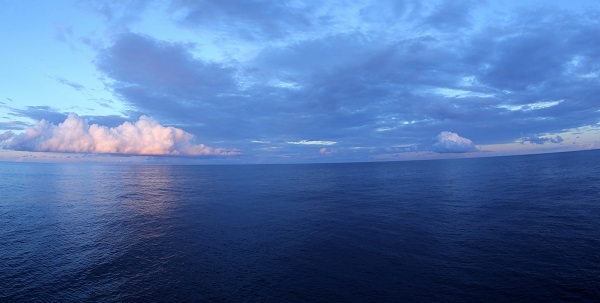New Delhi, The rainfall pattern across the globe is changing due to rapid warming of the Indo-Pacific Ocean and the changes have brought a decline in rainfall pattern in north India too, a study said on Wednesday.
In the study, led by Roxy Mathew Koll of the Indian Institute of Tropical Meteorology, Pune, under the Ministry of Earth Sciences, and published in the journal Nature, the researchers report a twofold expansion of the Indo-Pacific warm pool — the largest expanse of the warmest ocean temperatures on the earth.
They find that the expansion of this warm pool has altered the most dominant mode of weather fluctuation originating in the tropics, known as the Madden Julian Oscillation (MJO).
The changes in the MJO behaviour have increased the rainfall over northern Australia, west Pacific, the Amazon basin, southwest Africa and southeast Asia (Indonesia, the Philippines and Papua New Guinea).
At the same time these changes have brought a decline in rainfall over central Pacific, along the west and east coast of the US (eg, California), north India, east Africa, and the Yangtze basin in China.
Over north India, the impact is reduction of rainfall during the winter-spring season (November-April).
The MJO, characterised by a band of rain clouds moving eastward over the tropics, regulates tropical cyclones, the monsoons, and the El Nino cycle — and occasionally contributes to severe weather events over Asia, Australia, Africa, Europe and the Americas.
The MJO travels for a stretch of 12,000-20,000 kms over the tropical oceans, mainly over the Indo-Pacific warm pool, which has ocean temperatures generally warmer than 28 degrees Celsius.
This Indo-Pacific warm pool has been warming rapidly and expanding during the recent decades in response to increasing carbon emissions.
Though the entire Indo-Pacific has warmed, the warmest waters are over the west Pacific, creating a temperature contrast that drives moisture from the Indian Ocean to the west Pacific Maritime Continent, enhancing the cloud formation there.
As a result, the lifecycle of MJO has changed. The residence time of MJO clouds have shortened over the Indian Ocean by four days (from an average of 19 days to 15 days).
Over the west Pacific, it increased by five days (from an average of 16 days to 23 days). It is this change in the residence time of MJO clouds that has altered the weather patterns across the globe.
“There are coordinated international efforts underway to extend the range of accurate weather forecasts out to lead times of two to four weeks and the MJO is one of the most important keys to the success of this enterprise,” said Michael McPhaden, Senior Scientist at the US National Oceanic and Atmospheric Administration (NOAA), who participated in the study.
“Our results provide a critical benchmark for determining which computer models to trust for extended range weather forecasting, based on their ability to simulate the observed behavior of the MJO in a changing climate,” he added.










